Kitchen Project #63: Pistachio gateau basque
Custard sandwich in a springtime palette
Hello,
SURPRISE!
Welcome to today’s edition of Kitchen Projects. It’s so wonderful to see you here. I’m deviating from our normal Sunday schedule and jumping into your inbox a little bit early this week since the bank hol weekend is afoot. As always, I’m so excited about today’s recipe, especially since it can be endlessly adapted to suit your cake and custard needs.
Over on KP+, I have another Spring colour appropriate recipe for you in the form of double lemon ganache biscuits. Kitchen Projects+ aka KP+, is the level-up version of this newsletter. It only costs £5 per month and your support makes this newsletter possible! By becoming a member of KP+, you directly support the writing and research that goes into the weekly newsletter as well as get access to lots of extra content, recipes and giveaways, including access to the entire archive. I really hope to see you there:
Love,
Nicola
Before we get started… some Easter baking inspo:
With Easter on your doorstep, there’s a LOT of seasonal bakes on KP. Of course there are plenty of Hot Cross Buns to choose from. From Hot Croissant Buns, to the classic Hot Cross Buns or the Hot Cross Custard Swirls there’s a lot to keep you busy, but the white chocolate raisin kugelhopf would also be a delightful baked centrepiece on Sunday too, alongside the pineapple, toasted coconut and pistachio Little Lamb religieuse. I have also written a guide on how to make the best candied fruit and peel at home.
Spring it on
Now we are well into April I *officially* feel we are in peak Spring! The memory of February is fading and a serious spell of bank holidays begin to feel tantalisingly close, starting with today’s run into Easter.
Since we are still in that mid-seasonal fruit slump - citrus is waning and the berries are still taking shape on hedgegrows across the country - I’m looking to my trusty store cupboard again this week for some Springtime palette inspo. Fortunately, there’s a lot of wonderful things hiding in there including the very classic combination of pistachio (paste, as always) and cherries (preserved in syrup, mmmm).
What to do with them? Well, there are lots of fabulous European tortes and gâteaus that we will discover together in the future, but today we are landing firmly in the middle of a Basque classic with today’s recipe: Gâteau Basque:
Ahh, the great tradition of sandwiching delicious things between dough. There are two distinct ways to do it, either pre or post bake. Post bake sandwiching includes the classic victoria sponge, or doughnuts or any number of biscuits, including this upcoming KP+ recipe, double lemon ganache biscuits:
As for the pre-bake sandwiching situation, let’s dive right in.
Simply the basque
The basque region is the area that straddles the north of Spain and south of France. It is an area that represents the meeting of two culinary minds formed into its own distinct culture. Often considered ‘simple’ cooking at its absolute best, it’s hallmark is dishes that celebrate the innate flavour of the ingredients themselves - it is a rather naturalistic way of cooking. That being said, the basque region is also home to modern gastronomy and the most Michelin star restaurants per square meter in San Sebastian (so worth the visit!) with restaurants like Arzak. No matter its form, I will argue the superlatives of basque cuisine with fervent passion til the cows come home. The strident commitment to seasonality, the patience employed to coax out just the right amount of sweetness, or char from the grill makes me weak at the knees.
As much as I go to the basque region to eat mushrooms, txuleta (t-bone steak) and white fish in pil-pil sauce (and drink all the txakoli, a slighty effervescent white wine typical of the region), there are many desserts to be enjoyed. Of course we have all become well-informed of the famous San Sebastian burnt basque cheesecake and today’s recipe is just as satisfyingly custardy. The gâteau basque, which is just as delightful, comes from across the border- Iparralde aka French Basque Country. Whilst most basque desserts are simple - the cheesecake a prime example of this, or Torrijas, the caramelised custard bread that lives in my dreams - the gâteau basque definitely has a touch of fancy french pastry tradition influence.
It’s history can be traced back, passionately, to the 17th century but is credited to Marianne Hirigoyen, a baker from Cambo-les-Bains, France, who defined the modern version in the mid 1800s (thank you Marianne!!!). There is a museum dedicated to its history in Sare, and an official festival takes place every year on the first weekend of October in Cambo-les-Bains to celebrate its creation and the basque culture. It has 30,000 visitors every year and I think I might make an effort to be one of them this year.
So what is it? The gateau basque is two pieces of buttery pate sablee (though we’ll riff on that today) encasing a perfect creme patisserie to create the custard sandwich you’ve always dreamed of. It is not a traditional sablee dough - the pastry is much more buttery and soft and definitely distinctly cake-like. It is also traditional to use black cherry jam rather than custard. As we’ll discuss, this recipe is endlessly adaptable.
Taking care of green pistachios
Ah, a springtime palette - dont you just love a pastel? I have a soft spot for the verdant pistachio at this time of year. Ground pistachios must be deployed carefully due to their expense - and the super green ones are even more pricey. It is advisable to only use a pistachio recipe from a trusted source - I hope I am one! (Side note: Tarunima of My Little Cake Tin is definitely a trusted source and she recently shared her recipe for blood orange and pistachio cake)
So why are pistachios so expensive? Pistachios take a long time to grow and are very labour intensive to farm. The trees only grow in certain climates - cold winters (but not freezing) and non-humid hot summers - and they take 20 years to mature and reach peak production. After all this, each tree only produces around 20kg of nuts and on top of this, the trees tend to do a ‘one year on, one year off’ for bountiful harvests. Such divas! The most expensive pistachios in the world are grown in Sicily, which fetch double the price of Iranian and US pistachios. This article about the pistachios needing police protection is quite amusing.
The colour of pistachios range from yellow to bright green with hues of purple from naturally occurring anthocyanins, an antixoxident. The green colour comes from chlorophyll according to the wonderful Harold McGee, but all of the pistachios on the market don’t seem to be born colour-equal. Presumably nuts with particularly green hues are favoured and separated for our eating and visual pleasure. But it doesn’t come cheap - Sous Chef has a 500g bag of Sicilian peeled pistachios going for £66.00 (though currently on sale!) whilst my wholesaler (Albion Fine Foods) has Iranian pistachios for around £40.00/kilo (wholesale price though) and for today’s recipe I used these Iranian pistachios which cost £20/500g. So, it makes sense that we make the most of our nuts and store them for maximum freshness.
Here’s my best tip for you: At Ottolenghi, where we often used the super green pistachios as decor, we used to keep our ultra green pistachios in the freezer for ultimate freshness. It also helped them retain the colour. Brilliant!
Making your own nut pastes
Ah, nut pastes. Wonderful but… expensive? I am more than happy to make my own praline pastes at home since there is a charm in the slight grittness but for a nut paste… not so much.
First let’s remind ourselves of the pistachio pastes on the market: You can get Crema di Pistacchio, a Nutella like spread that has blended the nuts with sugar and additional fat – or the plain pistachio paste, which is pure blended nuts, perhaps with a little oil for fluidity. These are *in theory* interchangeable for the custard I’m sharing today, the plain nut paste is a lot more fluid and totally unsweetened. As well as this, nut pastes are not homogenised and will split into the oils and nut solids. This does mean you need to incorporate it more carefully as it may distribute unevenly throughout your mixtures.
For this weeks recipe we do need to grind pistachios fresh - I did a bunch and realised I had ground too much. What to do? An ideal time to see if I could make my own nut paste at home.
The answer? After an HOUR of blending - with breaks every few minutes- I got a reasonably smooth paste. Why only an hour? Well, I had no choice but to stop because my magimix had heated to 75c and turned off. Oops. Not advisable. Although the magimix, the beast that it is, was working fine the next day after it had cooled down, I think the potential risk associated with making your own nut pastes without industrial equipment is probably not worth it. Pistachios are expensive enough without having to replace your blender, too.
Side note: I realised this week that my Magimix and I have quite a lot in common. As I remarked to Rebecca Slade (of the wonderful Maple Leaf bakery in Glasgow), I would need a serious cool-down break if I ran for an hour, too. Oh - also I wrote a guide to blenders and food processors here last year.
In praise of Egg whites
I feel sorry for egg whites. Other than meringues, they’re definitely seen as the ugly sister of the egg yolk. And you know what, I get it! I spent years separating egg yolks for pastry recipes and ditching the whites, so today it’s the white’s moment to shine.
Here’s a reminder of the science: Eggs have two parts - the white and the yolk. The white is 90% water, with the rest being made up of proteins that float around doing their thing. The yolk is 50% water - the other 50% is a mixture of fat and protein. In their raw state, egg whites stay watery thanks to the bonds between proteins and water repelling each other. Thanks to the fat, which coats the proteins and helps prevent the repelling behaviour of the protein and water, egg yolks are a bit more together, even in the raw state.
You know how we’ve just spent a moment discussing how wonderful it is get that gorgeous green colour from the *expensive* pistachios? Well, you know what really gets in the way of a wonderful green colour? Egg yolks. Some egg yolks are so highly pigmented that the yolk will radically affect and tinge the overall visual effect of the final product.
By using egg whites we are achieving an extra tender set thanks to the extra moisture that is in the crust. As well as this, egg whites are total team players because they are pretty flavourless. Egg yolks are SUCH scene stealers and the egg white allows the flavour of the pistachios and butter to sing. Thank you egg whites.
As well as this, custards and pastry creams can absolutely be made with whole eggs - and should be! Because the results are fantastic. I’m not sure who banished the egg white from the pastry cream party but I’m officially inviting them back in this week. I like to use whole eggs for pastry cream compounds when I want the other flavours to come through like today with our pistachio (though I do note that I didn’t make this change for the religieuse a few weeks ago, probably because the amount was less than the weight of one egg) - the whole egg provides the same spoonable lucisiousness but without the yolky-richness.
Finally, we will use egg whites today to wash our basque - we don’t want a dark golden crust that a whole egg or egg yolk only wash will give you. Egg whites will form a delicious thin crust that the sugar adheres to very well.
Last year I also professed my love for the egg-white-only custard in the form of a peach creme-caramel if you want to get deeper into the magic. So, the next time you are coming up with a custard recipe, take a moment to question your egg white prejudice and whether you *really* need to add another white to your freezer stash.
When pastry becomes cake
Although the gâteau basque description usually describes the dough layer as a pate sablee, most recipes I’ve come across definitely push the boundaries between dough and cake. This is due to a much lower proportion of flour compared to a standard tart dough. Below you’ll find my final recipe for the basque which is adapted from the recipe provided on Le Musée du Gateau Basque (spoiler alert, mine has more butter and nuts in it!) Let’s consider some famous ratios to compare what is happening here:
As you can see here, the quantity of flour and butter is much more in line with a cake, but the eggs and sugar is much more in line with a tart dough. This results in a tender half-cake-half-biscuit love child that is really fun to eat.
The other main difference is the raising agents (not included in the table) which are much more in line with a cake - this makes a very fluffy dough indeed. I use a mixture of baking soda and baking powder for oomph and lightness. The baking soda reacts with the lemon juice and zests in the dough for a little lift, but the rest of the work is done by the baking powder when in the oven. Due to the raising agents, you do have to be careful not to overfill your tart case or it will explode over the edge. Not the end of the world, but not the cute adorable gâteau that we deserve.
I’ll be honest with you - this dough is a little bit tricky to work with since its so sticky, but if you employ a zen state of mind you’ll find it easy peasy. Plus, I’m with you every step of the way.
Adapting the recipe
One of my goals for writing this newsletter is to equip you with the tools you need to develop your own recipes. Today’s recipe is definitely one of the easiest ones for you to put your own spin on - we are essentially smooshing it into a tin to bake so it doesn’t require the same amount of structural engineering as some bakes. Let’s break it down:
Flour - This recipe will lend itself well to using wholemeal flour, or a portion of buckwheat flour
Nuts - you can omit these entirely or use a different ground nut - hazelnuts, almonds, sesame (though maybe not quite as much, sub half) etc.
Sugar - play around with using light, dark or panela sugar. Also sub 25%for a liquid sugar like jaggery syrup, or maple
Zests - I have included lemon zest and juice in this recipe but you can easily forgo it completely
Eggs - I have used all egg whites in the recipe to retain the best green colour from the pistachios, but whole eggs would have worked just as well. If you had leftover egg yolks, I think that would work too and would give you a more rich and crumbly dough
Fillings - this is where you can really have fun. Want something low effort? Go full nutella (though you might be disturbed at how many jars you need to fill up an 8inch case) or jam, or make something yourself. You could use the spiced pastry cream from the hot cross buns, or this chocolate custard, or swap the pistachio paste for hazelnut paste, or the filling from the million layer apple galette, or the apple butter, or a combination! This truly is a canvas for you to make cake art upon. I’ve used preserved cherries, but in the summer months you could use any sort of berries and in the winter you could use poached fruit and rhubarb.
Alright let’s make it.
Pistachio gâteau basque
Makes 1 x 8inch cake/tart
Basque dough
140g butter
110g sugar
10g lemon juice
Zest 1 lemon
60g egg whites (about 2, use any leftover for egg wash!)
150g flour
2g baking powder (about ½ tsp)
2g baking soda (just under ½ tsp)
75g ground pistachios
4g salt
Pistachio custard
300g milk
90g caster sugar
50g whole egg (1)
15g yolk (1)
25g cornflour
75g pistachio paste
25g butter
Extras
80-100g preserved cherries or any fresh berry (I use Fabbri Amarena cherries which you can get from any italian deli) or jam of choice
To finish - egg white to wash the pistachio pastry and about 10g caster sugar to sprinkle on top
Method - dough
Grind your pistachio nuts - you want them to be fairly fine but its okay if there are still chunky bits!
Cream butter with sugar and lemon zest for 1-2 minutes until well combined but not aerated
Whisk the egg white a little to break it down so you can add it easily (not in one big gloop!) to the butter. Add it a little at a time, scraping down the butter/sugar mixture. It may look a bit split - that’s okay, just do your best
Add the lemon juice
In a separate bowl, whisk together the flour, ground nuts, raising agents and salt
Paddle the dries through the butter/sugar mixture until well combined. It will be very SOFT. That’s correct.
Scrape mixture onto cling fim / into a reusable tub and seal. I tend to spread it out very thin and flat so it chills more quickly
Rest in the fridge for 3-4 hours or overnight until firm. You can also put into the freezer for 30 minutes and then move into the fridge if you want to speed things up
Method - pastry cream
Heat milk and half the sugar to simmering
Whisk the whole egg and yolks with pistachio paste, other half of sugar and cornflour
Pour the hot milk over the yolks and whisk then pour it back into the saucepan – keep stirring until it thickens and bubbles
Remove from the heat and pass through a sieve
Leave to cool slightly then then stir through the butter OR, even better, use a hand blender to emulsify really well. This will give you the smoothest pastry cream
Leave to cool completely
Method - assembly
Grease an 8inch tart tin (very well)
Take your well chilled pastry dough and remove about 150g - this will be for the top
Roll the 150g piece of dough between two sheets of greaseproof until around 3-5mm thick and in a round shape that would easily cover the 8inch tin. Place into the freezer on a tray to chill whilst you work on the rest of the dough
Press the rest of the pastry into the tart tin, flouring your fingertips to help press it in. It is going to get soft really easily so just press it in as neatly as you can
If you are using jam, spread across the base of the tart and put into the freezer for 5-10 minutes to set
Take your chilled custard and spoon it into the case, spreading out evenly
If using, dot your fruit in the custard
Remove your dough from the freezer and peel back one side of the paper. Place the paper back on and then flip it and peel the other side of the paper off. This makes sure the dough comes off easily!
Place the dough over the tin, carefully, then press to seal the edges. Pressing down and removing the excess. You don’t want to the tart to be too full because it will rise in the oven. Remove the paper carefully (see gif above!)
If you can see air has got trapped between the custard and the dough, stab vents into the tart then press gently to release the air, then close it back up!
Place tart in the freezer for 20 minutes or the fridge for 45 minutes to chill
Pre-heat oven to 170c fan
Brush gâteau with egg white and sprinkle with 10g of sugar
Bake for 40-50 minutes until golden on the edges and risen
Leave to cool for 2-3 hours before slicing


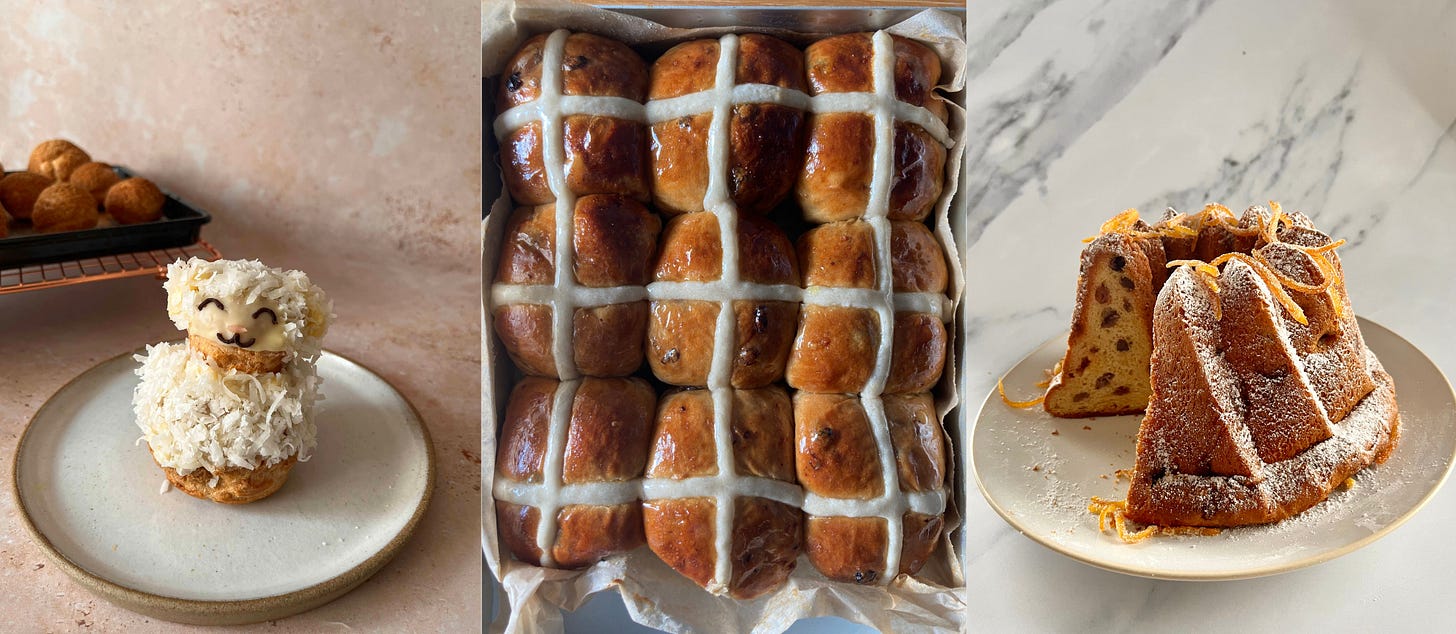


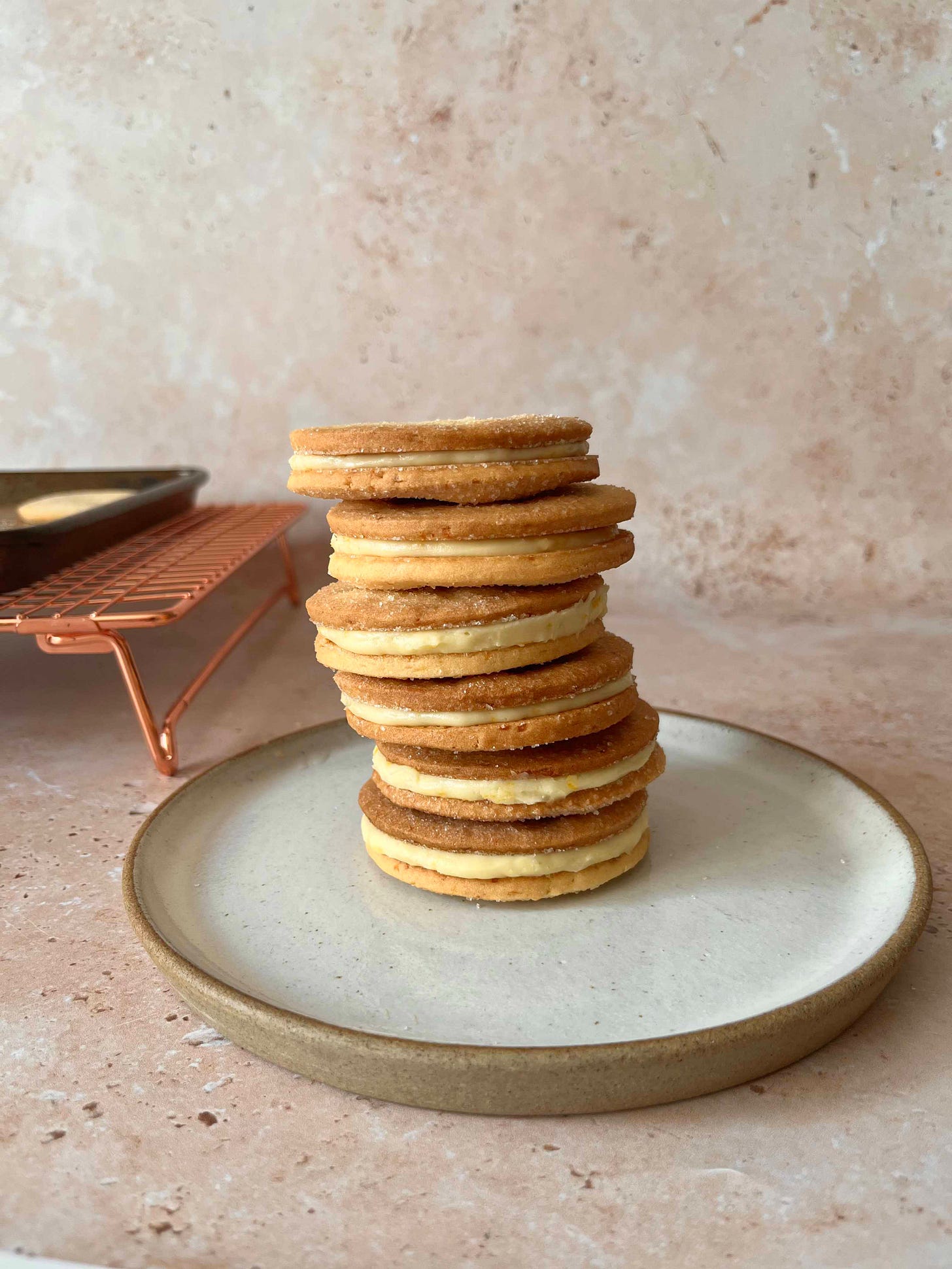
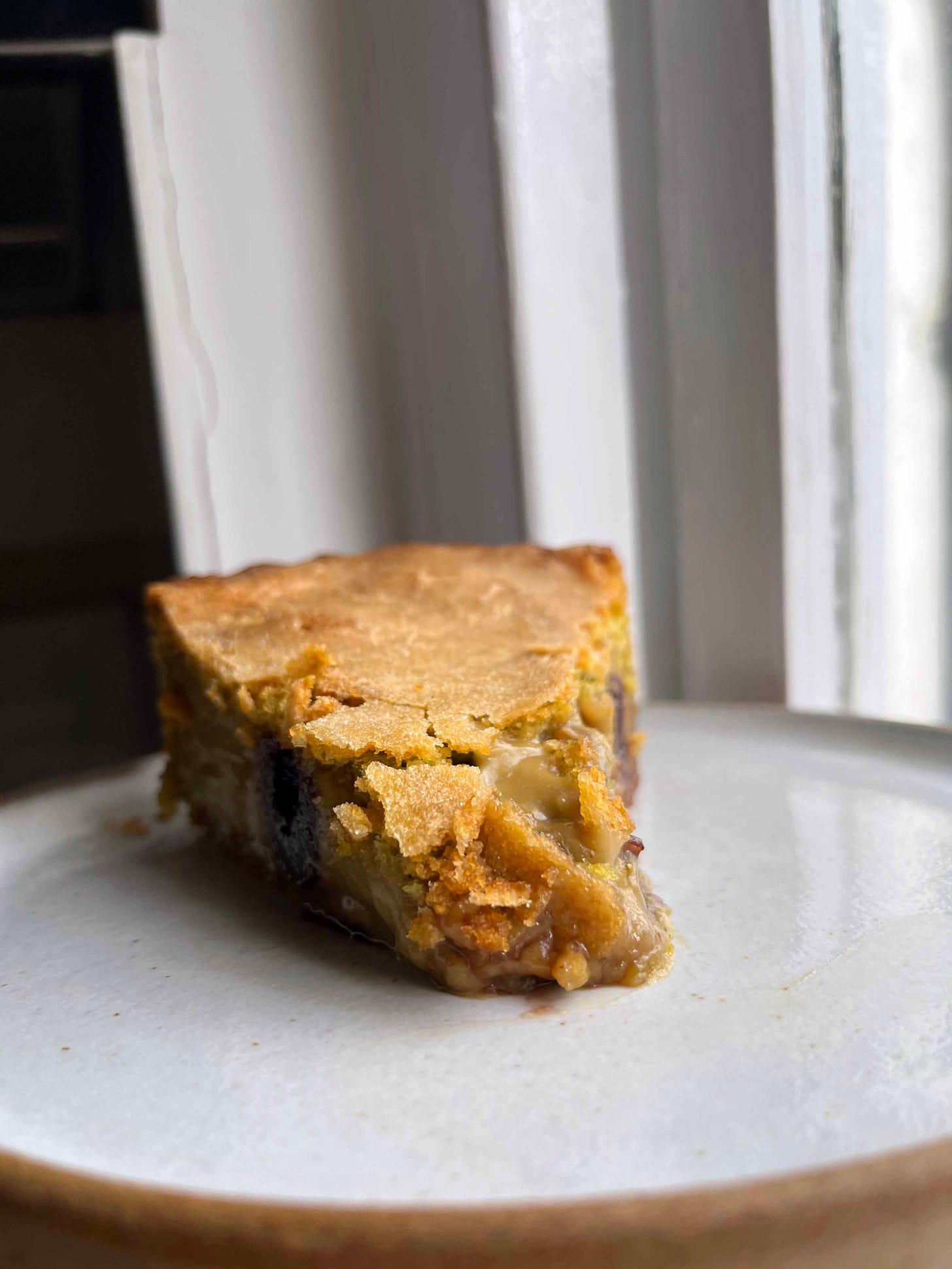
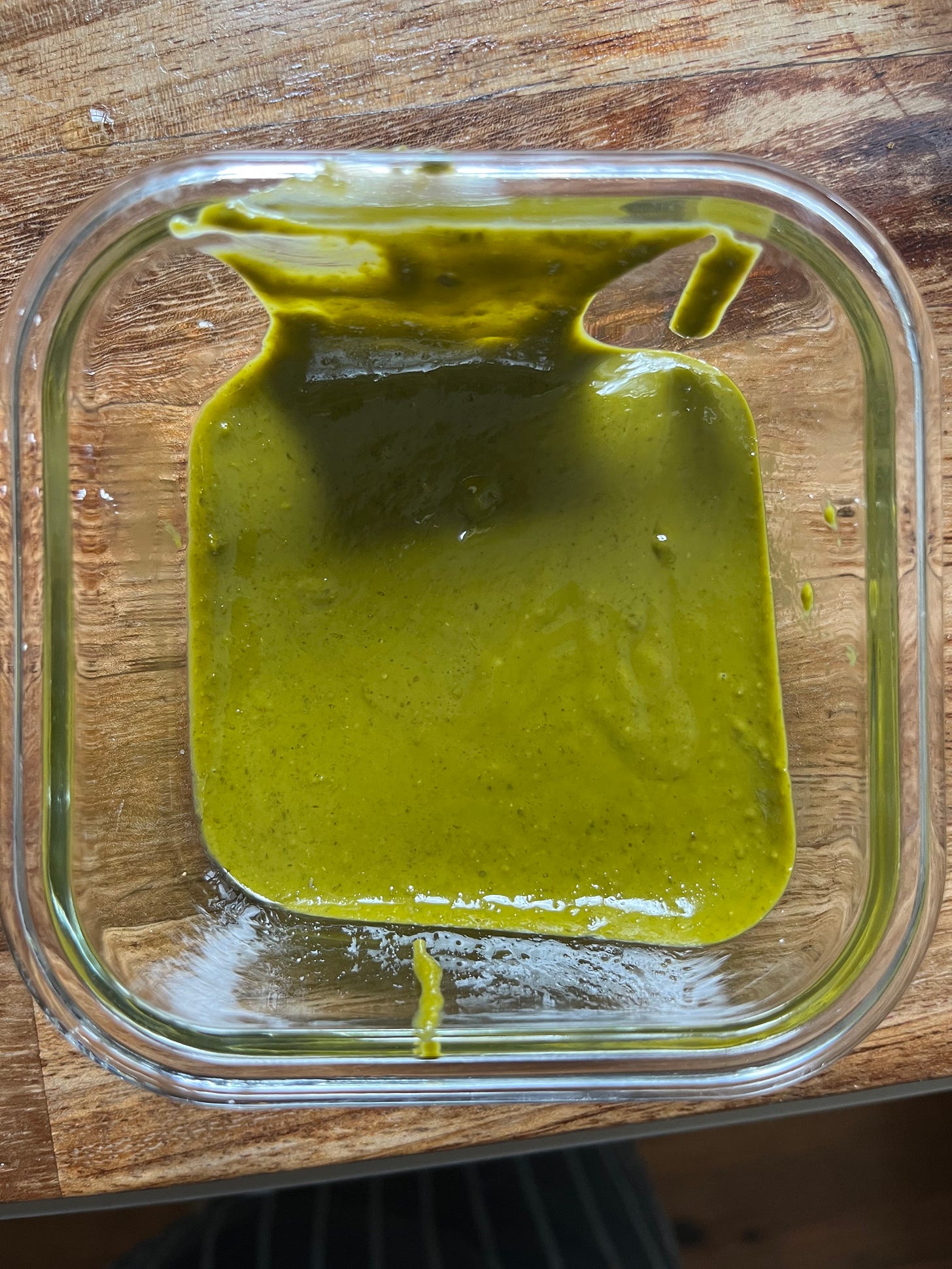
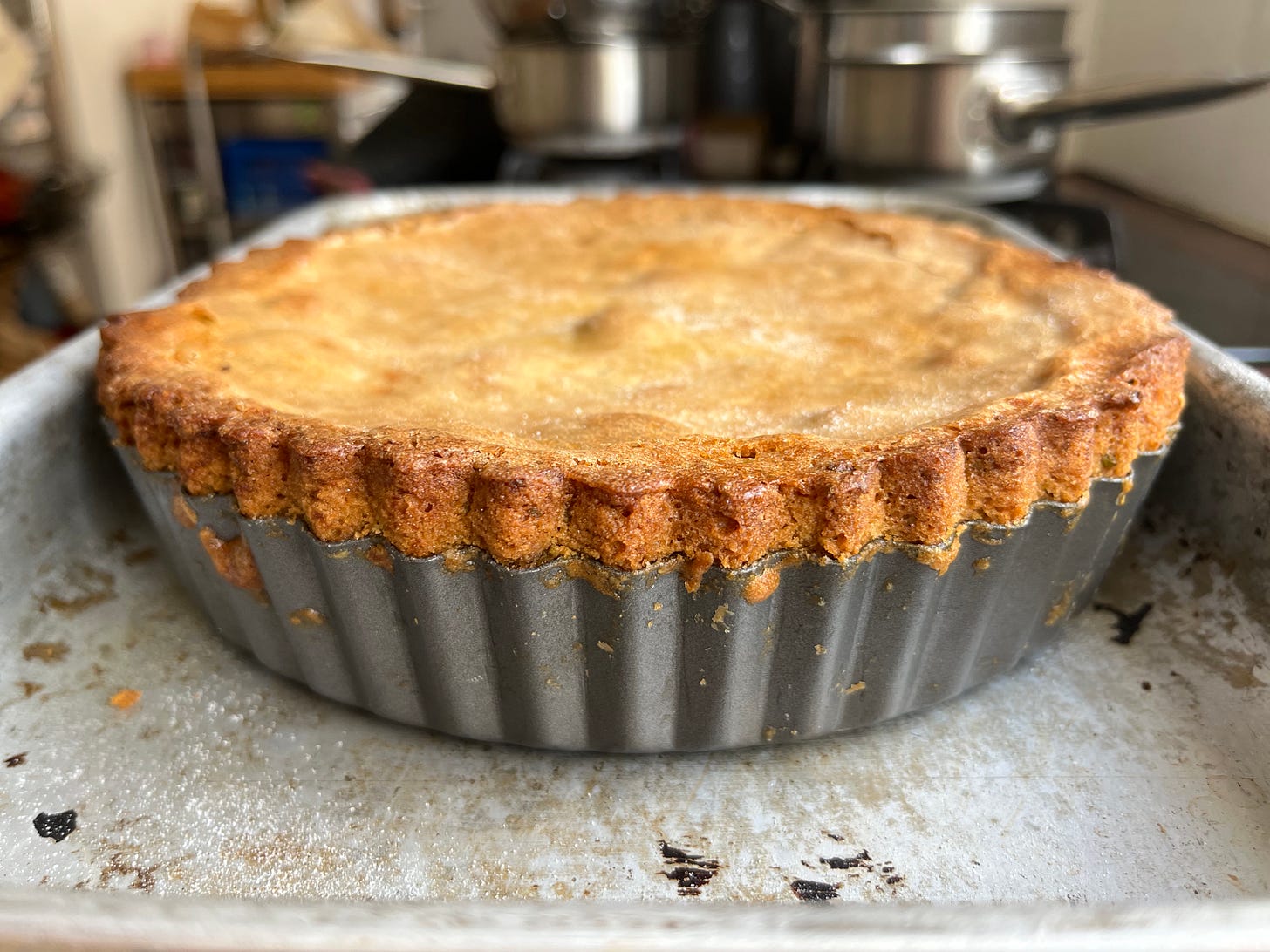

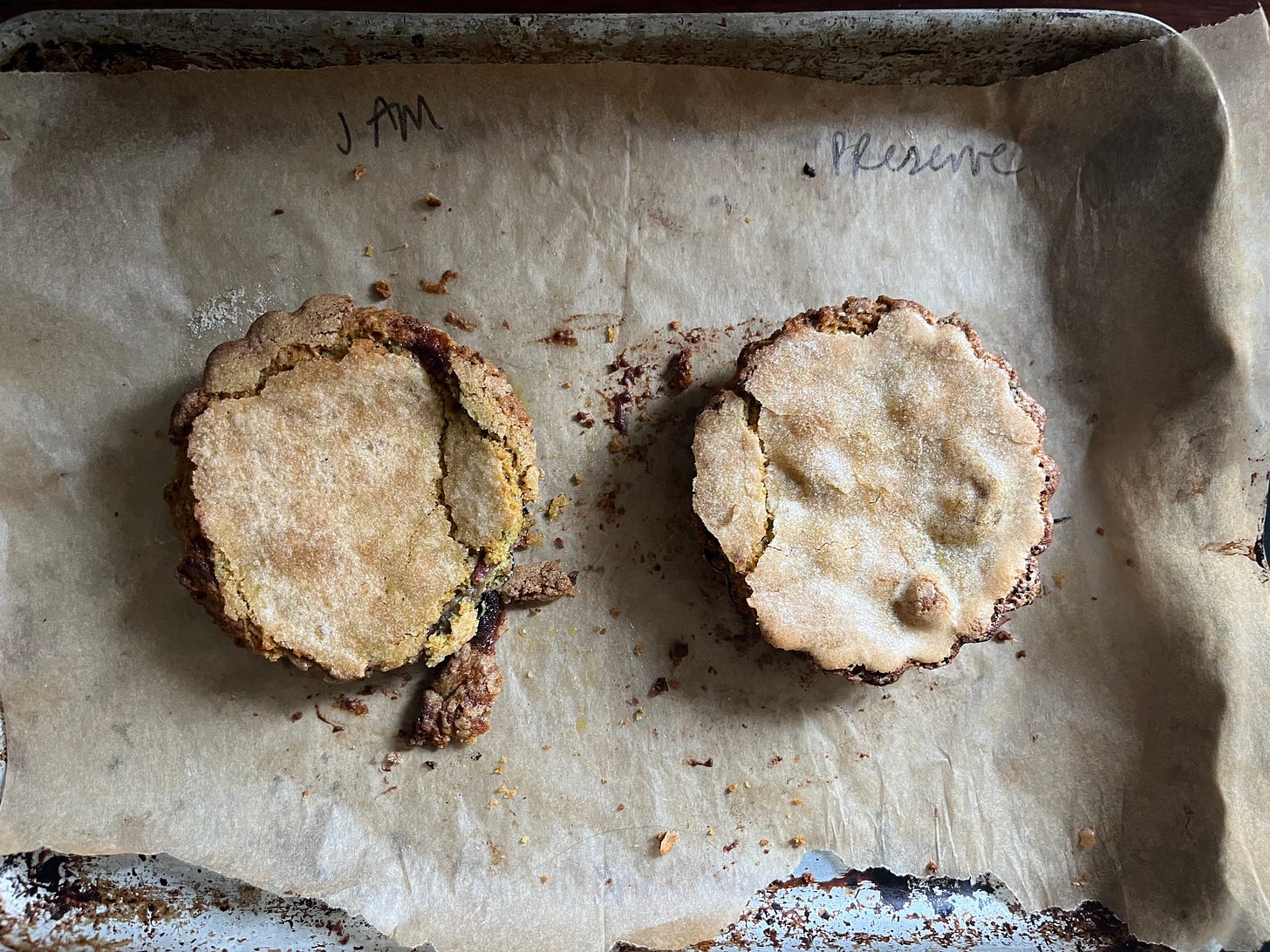
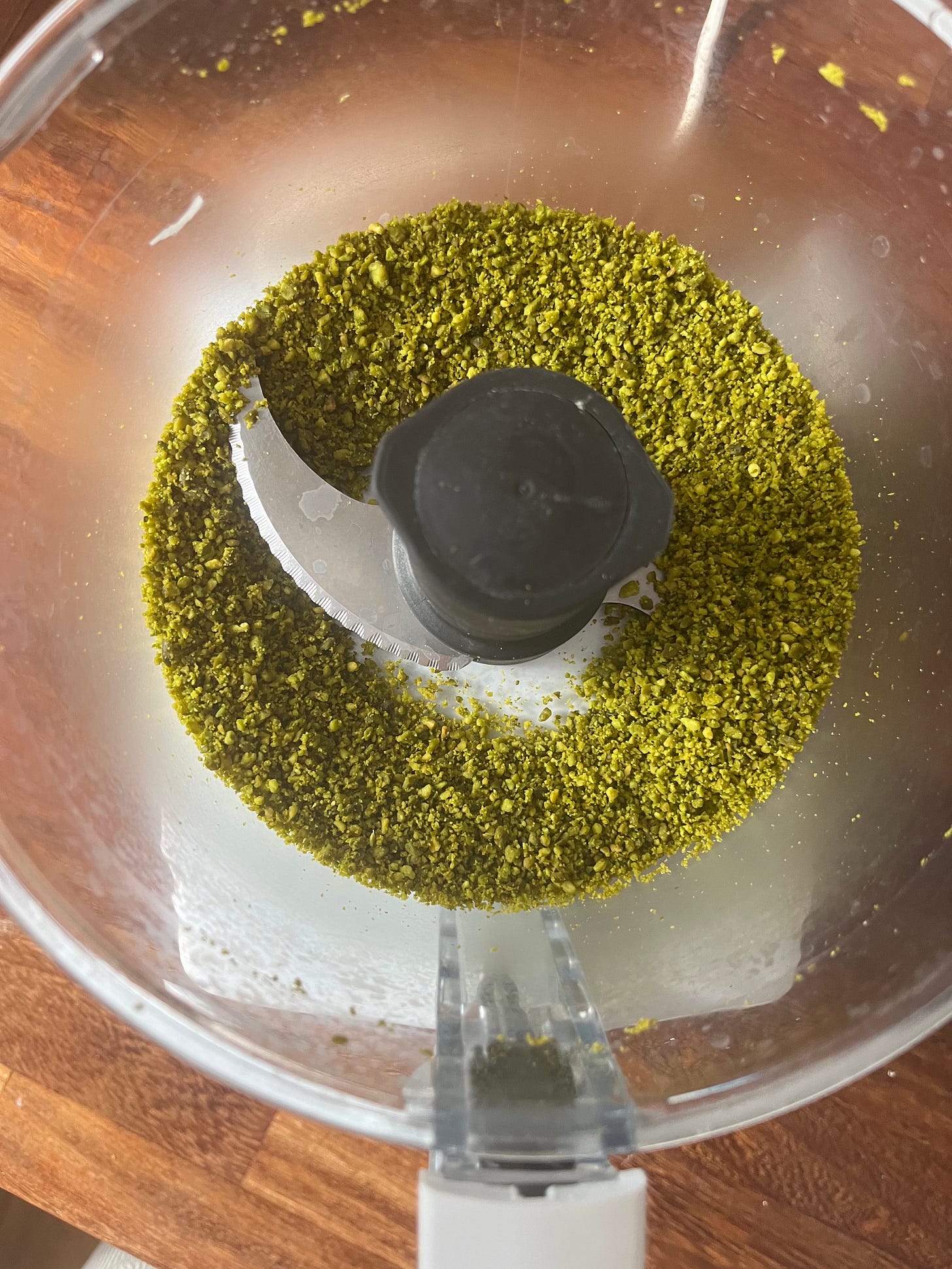
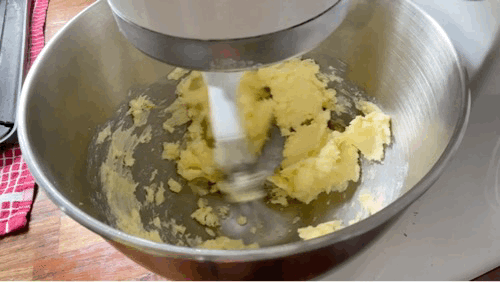
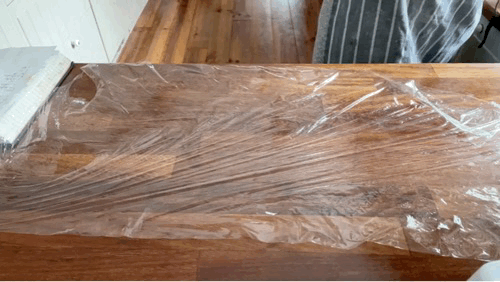
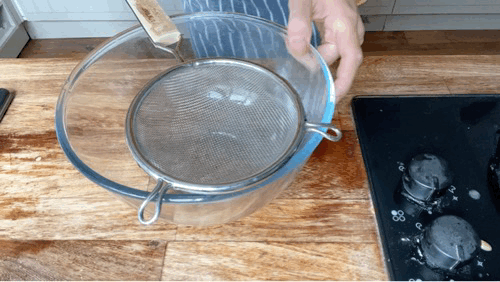
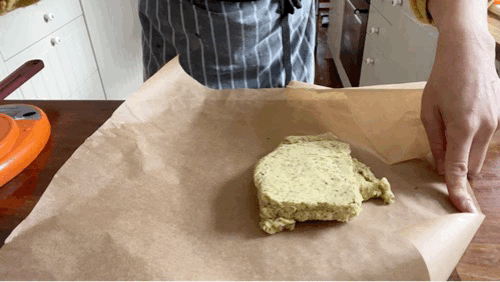
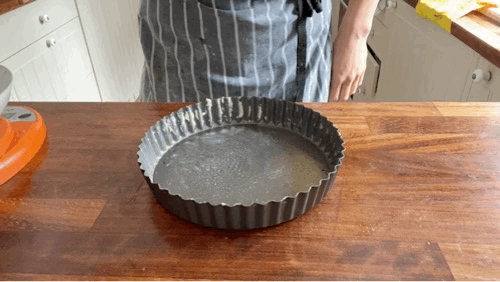
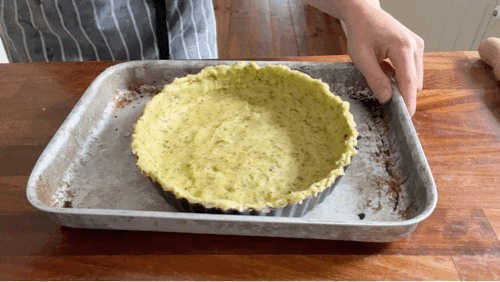
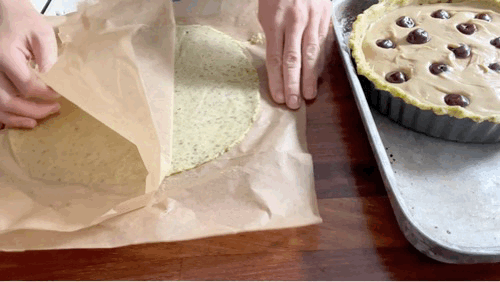
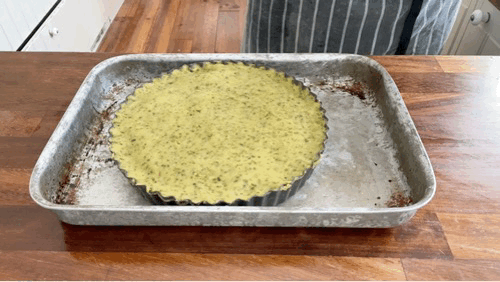
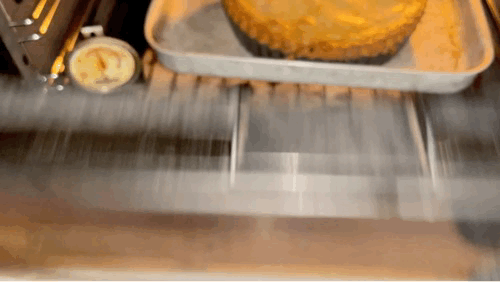
I was gifted a large jar of pistachio cream. I always use pistachio paste for my gelato recipe but I am wondering if I could use the pistachio cream in this custard recipe…maybe make a thicker pastry cream base first?
Just put this recipe on my list of recipes to make during the summer! One question: How did you get the cake out of the tart tin? Did you just turn it around? I am afraid it might break.
Thanks in advance :)